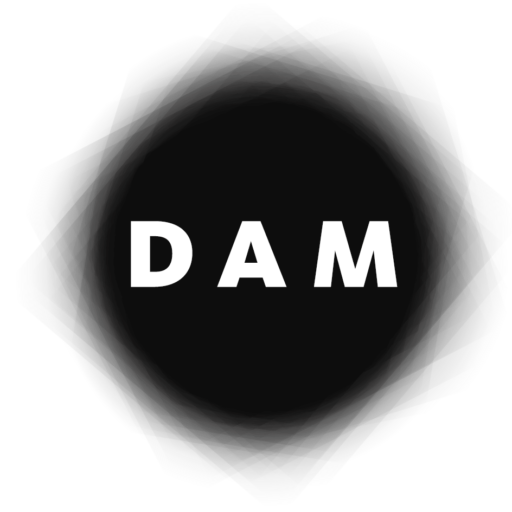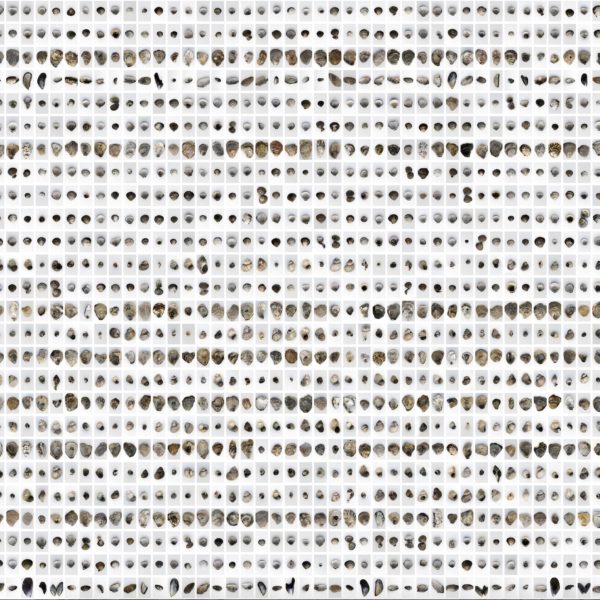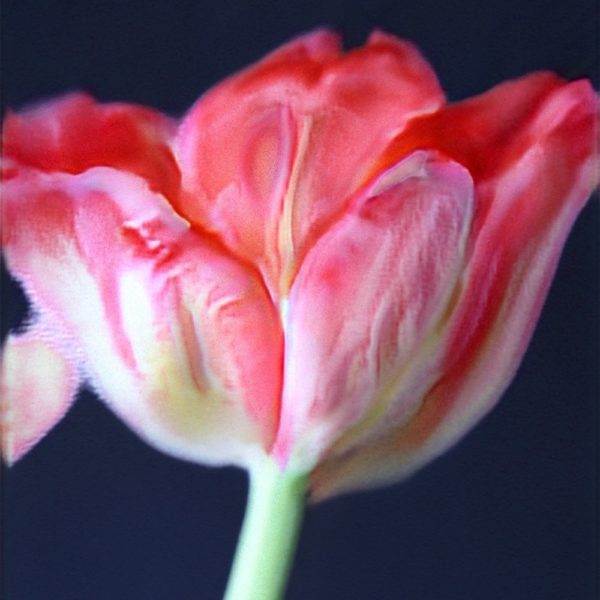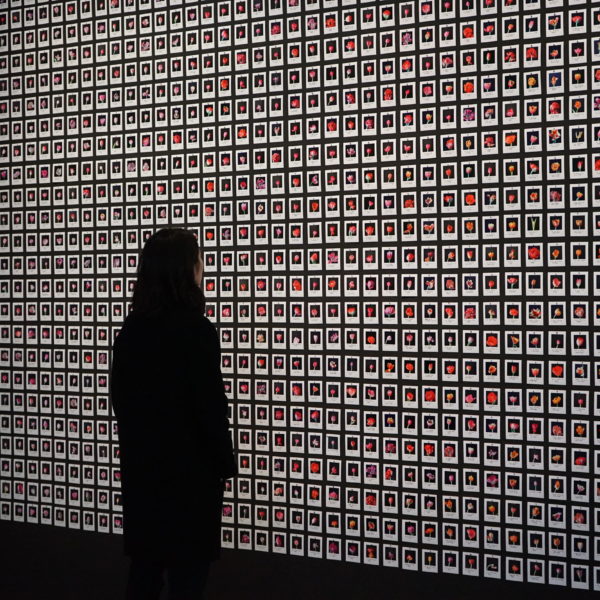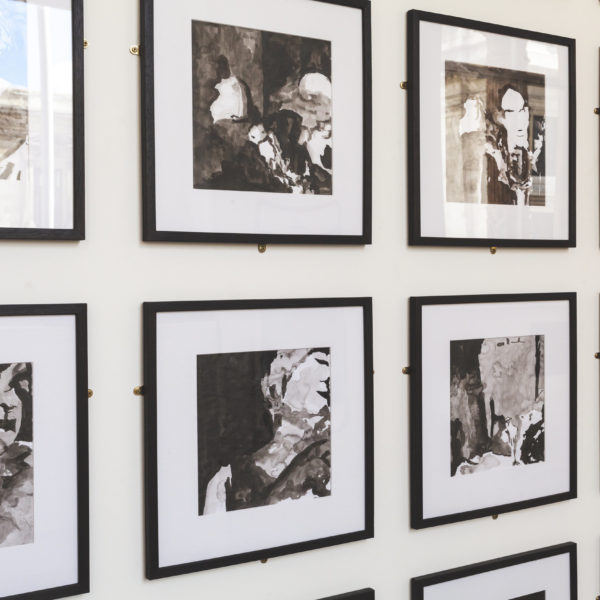
Anna Ridler is an artist and researcher whose work focuses on data collection and systems of knowledge. She builds large handmade datasets to train machine learning algorithms, which generate images, texts, and sounds that shape a series of artworks characterised by the notions of narrative, creativity, and memory.
Website of Anna Ridler:
www.annaridler.com
The Shell Record (2021)
The Shell Record is both a dataset of shells gathered by that artist from the foreshore of the river Thames in early 2021 and moving image pieces generated by using a GAN trained on this imagery. It explores ideas around collecting, value and trade and links to the history of shells being used as stores of value as one of the earliest forms of currency.
Bloemenveiling (2019)
An early piece of NFT art, Bloemenveiling was an online auction of short GAN generated videos of tulips; it used smart contracts on the Ethereum network to sell the work and bots to help drive speculative prices. The piece was made in collaboration with David Pfau, an artificial intelligence researcher, and is the third in a series of work that looks at the relationship of the tulip to speculation, hype and value.
Mosaic Virus (2018-2019)
Mosaic Virus (2018) and Mosaic Virus (2019) are a series of works that bring together ideas around capitalism, value, and collapse from different points in history. The former is a single screen moving image piece displaying a grid of continually evolving tulips in bloom; the latter a three screen video installation, each screen showing a single tulip. In both pieces the tulips are controlled by the price of bitcoin, changing over time to show how the market fluctuates and making this connection explicit.
Myriad (Tulips) (2018)
Myriad (Tulips) is an installation of thousands of hand-labeled photographs of tulips; these photographs were later used as the dataset for Mosaic Virus 2018 and Mosaic Virus 2019. By choosing to make the dataset an artwork it draws attention to the skill, labour and time that goes into constructing it, whilst also helping to expose the human element in machine learning, usually hidden by algorithmic processes.
Drawing with Sound (2017)
Drawing with Sound (2017) is a durational performance translating the act of drawing into a series of sounds made in collaboration with composer Ben Heim During the performance, Ridler wears a specialized headset which recognises shapes as they are drawn, triggering a melodic series of falls and crescendos of overlapping and dissonant soprano voices controlled by the response of trained neural networks.
Fall of the House of Usher I and II (2017)
Fall of the House of Usher I (2017) is a 12 minute animation, exploring Watson and Webber’s 1929 silent film adaption of the Edgar Allan Poe short story from 1839; a tale about decay and destruction. The work fuses two hundred ink drawings made with the technical process of machine learning to accentuate the horror story in the original film and notions of fear around artificial intelligence itself. Each still has been generated by a general adversarial network trained on original ink drawings.
Fall of the House of Usher II (2017) is a handmade dataset of over two hundred individual ink drawings based on Watson and Webber’s 1929 silent film, Fall of the House of Usher. A system of feedback loops processed and reproduced the drawings using specially modified algorithms. Footage generated by a generative adversarial network was then used to form the basis of the next training set. Concepts of repetition, remembrance and recreation are central to the Fall of the House Usher series.
Wikileaks: A Love Story (2016)
Wikileaks: A Love Story (2016) is an interactive installation incorporating augmented reality. Scraping Wikileaks to find an unlikely story of love in the workplace, data from real emails between two people are used to construct tales of romance, falling in and out of love. Over 10,000 pages of documents from Wikileaks lay in stacks across a long table. The documents are viewed through an augmented reality app installed on an iPad to reveal their hidden stories that lie within lay in stacks.
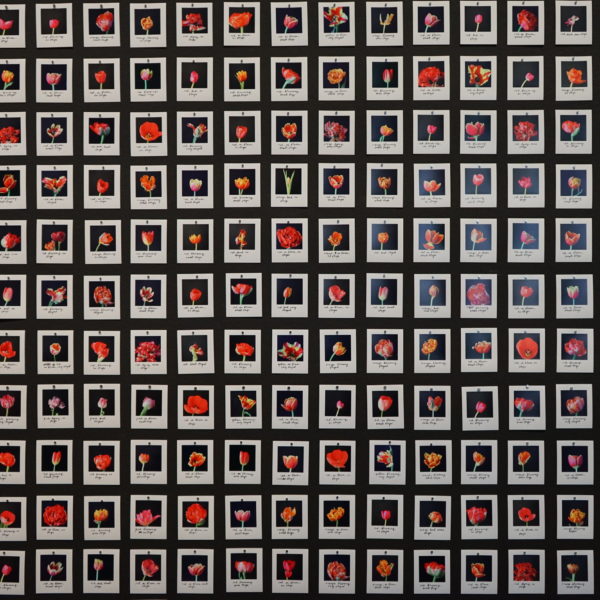
How knowledge is made
Anna Ridler
Interview by Jurij Krpan and Pau Waelder for The Future of Living, 2021
My practice brings together the scientific, academic and the artistic and sits between all of those three spaces. It spans photography, installation, generative work, writing, and sound. And I’m very interested in systems of knowledge and how knowledge is made and formed and kept, which has led me into working with machine learning and artificial intelligence. And part of this interest, I suppose, comes about by taking the technology that I’m working with, and unpacking it.
So when I work, I do everything from building the systems, building the dataset, and then building the final output installation, and whatever it is. And I think that by doing all of that process, you can understand how things are created. And by that understanding, see what histories, connotations, and associations are embedded in all of these parts of technology, and, by extension, the artwork. And so for me, one of the things that I’m really interested in is using this new technology and using these new ways of thinking as a way of kind of exploring and understanding the world.
I’ve always been interested in working with large amounts of information and large amounts of data as part of my practice and seeing what stories you can find and translate. And data sets are so inherent to working with machine learning, that it was a natural step to see what was being used by these large systems and what could I do by making my own data. When I started to see that, I started to learn more and more about how the actual algorithms and models worked. I’m really interested in how you can use machine learning artificial intelligence, not just as a tool, but as a process and as a way of working.
This has come out in my practice, through an iterative way of working, where I’ll build it a step, start to train the model, and I’ll see what will come out. And then I’ll go back and make more of the data set, and then see what comes out and then do it again and again and again. And each time understanding more about myself and more about how the model works. The more that I’ve been working with it, the more that it’s become embedded in my practice, the more I understand and the more I think I’m able to ask interesting questions and make interesting work.
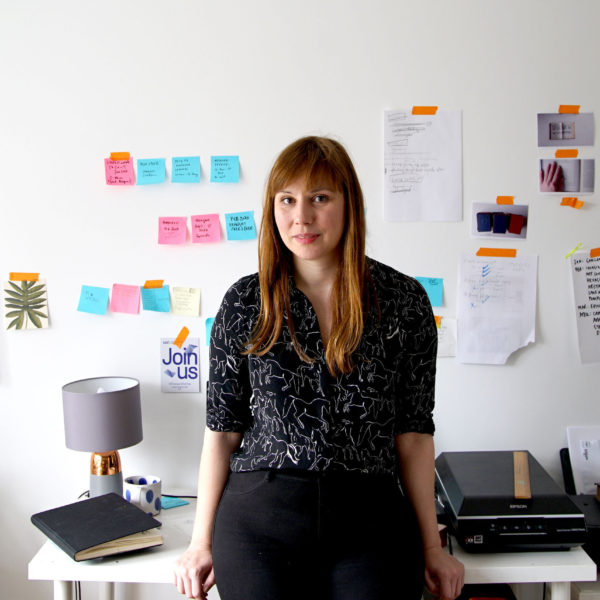
London (United Kingdom), 1985
Born in London, Anna Ridler spent her childhood between Atlanta, Georgia and the United Kingdom. She obtained her Bachelor’s degree in English Literature and Language at Oxford University in 2007 and later on, between 2015 and 2017, completed a Master’s degree in Information Experience Design at the Royal College of Art in London. Shortly after graduating, she was a visiting scholar at the University of Leeds in 2018 and a year later she was awarded a fellowship at the Creative Computing Institute at the University of the Arts London (UAL). While carrying out her studies at Oxford University, Ridler became interested in processes of classification and the relationship between words and data, as observed in the video No replacements found (2015). She would further develop this line of research using Machine Learning and the manual elaboration of datasets. In line with her focus on extracting information from raw data and building a narrative, the artist also worked with leaked documents, such as those made public by Wikileaks in 2013, which she used to trace a personal story of two government employees among thousands of confidential emails in Wikileaks: A Love Story (2016). Two artworks created during her last year as a student at the Royal College of Art show how Ridler applied the concept of translation to the visual arts, using machine learning techniques. In Drawing with Sound (2017), she draws while wearing a headset that recognises the shapes and triggers a series of sounds made in collaboration with composer Ben Heim. In Fall of the House of Usher I and II (2017), she creates a series of two hundred drawings based on a silent film, with which she trains three generative adversarial networks (GAN). These produce three animated films, each of them an interpretation of the previous one, and of the artist’s drawings.
In 2018, while an artist in residency at Impakt (Utrecht, Netherlands), Ridler created Myriad (Tulips), a new dataset with ten thousand photographs of tulips presented as an installation. As with Fall of the House of Usher, the laboriously constructed set of images constitutes an artwork in itself, through which the artist aims to draw attention to how datasets are built, and expose the human labour hidden behind the algorithmic processes in machine learning. This dataset was later on used to create the artworks Mosaic Virus (2018-2019) and Bloemenveilig (2019). In the former, the images of tulips are used to train a generative adversarial network, which produces new images whose shape is influenced by the price of bitcoin. The latter comprised a series of GAN-generated videos sold as NFTs on the Ethereum network, and a system to drive speculative prices, made in collaboration with scientist David Pfau. Ridler continues to explore the creative uses of artificial intelligence technologies through collection and categorisation of specimens. Her latest handmade dataset is a large series of shells gathered from the shore of the river Thames in early 2021, which she has used to train a GAN in generating images for the artwork The Shell Record (2021).
Her work has been exhibited at cultural institutions worldwide, including the Victoria and Albert Museum, the Barbican Centre, Centre Pompidou, HeK Basel, the ZKM Karlsruhe, Ars Electronica, Sheffield Documentary Festival and the Leverhulme Centre for Future Intelligence. She was a European Union EMAP fellow and the winner of the 2018-2019 DARE Art Prize. Ridler has received commissions by Salford University, the Photographers Gallery, Opera North, and Impakt Festival. She has also received the Delfina residency as a “science_technology_society” fellow. She was listed as one of the nine “pioneering artists” exploring AI’s creative potential by Artnet and received an honorary mention in the 2019 Ars Electronica Golden Nica award for the category AI & Life Art. She was nominated for a “Beazley Designs of the Year” award in 2019 by the Design Museum for her work on datasets and categorisation.
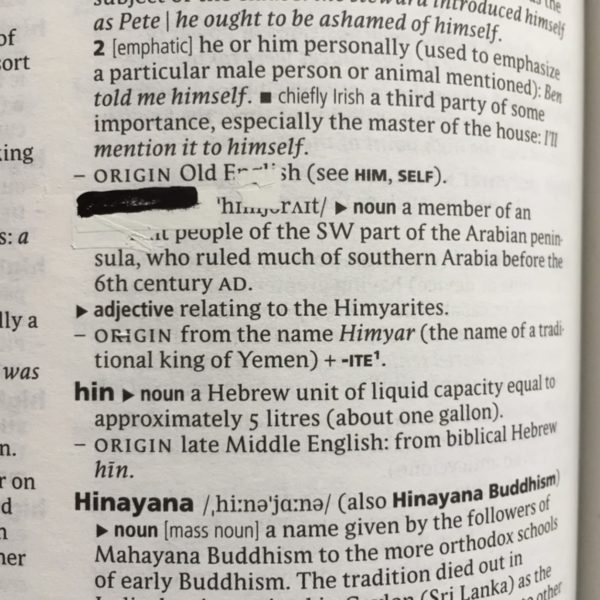
Ridler, A. (2017). Repeating and remembering: the associations of GANs in an art context. Long Beach, CA: 31st Conference on Neural Information Processing Systems (NIPS 2017). [ENG]
Ridler, A. and Ward Dyer, G. (2017). Fairy Tales and Machine Learning: Retelling, Reflecting, Repeating, Recreating. London: ARC Magazine [ENG]
Ridler, A. (2018). Fall of the House of Usher. Datasets and Decay. London: Victoria and Albert Museum Blog [ENG]
Ridler, A. (2019). Making sense of it all. Gent: DAMN Magazine [ENG].
Ridler, A. (2021). A contemporary Tulpenmanie. London: Antennae [ENG]
